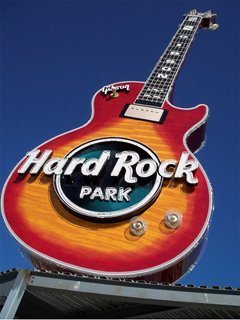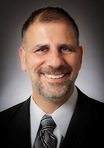Sam Gennawey's Blog, page 6
June 24, 2013
Remember the Hard Rock Theme Park?
Published on June 24, 2013 06:00
June 21, 2013
Photos From Walt Disney's Personal Camera
The good folks over at D23 have sent out some wonderful personal photos from Walt Disney to the thousands of Disney bloggers. This is the kind of stuff you will see if you sign up for D23, including the new free membership option. To learn more, go HERE.
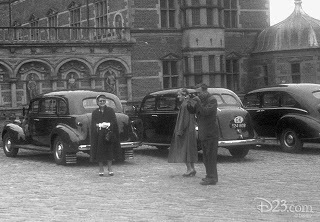
This never-before-released photo, taken with Walt’s personal camera, show Walt and his family visited Denmark in June 1951, where this photograph was taken. From the “D’scovered” feature exclusively on D23.com.
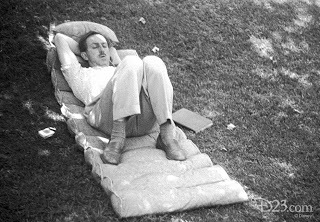 This never-before-released photo, taken with Walt’s personal camera, show Walt sleeping in the shade on the lawn of his Woking Way home on a state-of-the-art '40-s cushion—a book at his side. From the “D’scovered” feature exclusively onD23.com.
This never-before-released photo, taken with Walt’s personal camera, show Walt sleeping in the shade on the lawn of his Woking Way home on a state-of-the-art '40-s cushion—a book at his side. From the “D’scovered” feature exclusively onD23.com.

This never-before-released photo, taken with Walt’s personal camera, show Walt and his family visited Denmark in June 1951, where this photograph was taken. From the “D’scovered” feature exclusively on D23.com.
 This never-before-released photo, taken with Walt’s personal camera, show Walt sleeping in the shade on the lawn of his Woking Way home on a state-of-the-art '40-s cushion—a book at his side. From the “D’scovered” feature exclusively onD23.com.
This never-before-released photo, taken with Walt’s personal camera, show Walt sleeping in the shade on the lawn of his Woking Way home on a state-of-the-art '40-s cushion—a book at his side. From the “D’scovered” feature exclusively onD23.com.
Published on June 21, 2013 11:45
June 20, 2013
EPCOT: Exceptional, Acceptable, and Regrettable
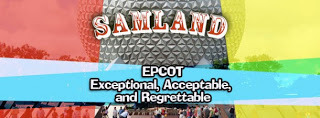 Epcot has long been a favorite of mine. As you can imagine, I have been somewhat obsessed with Walt’s original vision, if you know what I mean (I did write the book
Walt and the Promise of Progress City
). I also enjoy the permanent World’s Fair that took that project’s place.This was the first time in a long time that I have been to the park without some special event going on. No Food and Wine, no Flower and Garden, and no holiday celebrations. I had forgotten what the place felt like just on its own. It was an odd sensation.Using my scale of exceptional/acceptable/regrettable, I will walk through my most recent experience. Let me know if you agree or disagree.READ MORE AT MICECHAT
Epcot has long been a favorite of mine. As you can imagine, I have been somewhat obsessed with Walt’s original vision, if you know what I mean (I did write the book
Walt and the Promise of Progress City
). I also enjoy the permanent World’s Fair that took that project’s place.This was the first time in a long time that I have been to the park without some special event going on. No Food and Wine, no Flower and Garden, and no holiday celebrations. I had forgotten what the place felt like just on its own. It was an odd sensation.Using my scale of exceptional/acceptable/regrettable, I will walk through my most recent experience. Let me know if you agree or disagree.READ MORE AT MICECHAT
Published on June 20, 2013 09:26
June 18, 2013
My Favorite Spot in The Wizardry World of Harry Potter
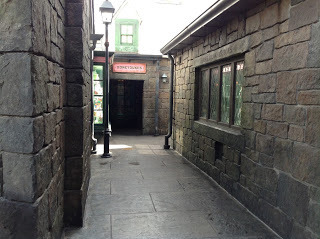 On a recent trip to Florida, I found myself in a back alley within the Wizardry World of Harry Potter between Honeydukes and Three Broomsticks. Although the area was filled to the brim with people, there was nobody back here except Team Members going backstage. There is even a little door that goes into the candy shop. Watch out for the Three Broomsticks window. Seems that there are spirits at work cleaning the dishes.
On a recent trip to Florida, I found myself in a back alley within the Wizardry World of Harry Potter between Honeydukes and Three Broomsticks. Although the area was filled to the brim with people, there was nobody back here except Team Members going backstage. There is even a little door that goes into the candy shop. Watch out for the Three Broomsticks window. Seems that there are spirits at work cleaning the dishes.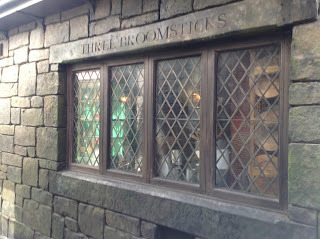
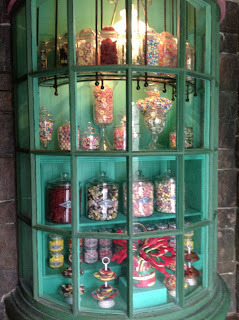

Published on June 18, 2013 12:33
June 17, 2013
WDW IN THE 1980s: WHERE IS THE MIDDLE CLASS?
It was a tough time in the mid-1980s at Walt Disney World. Ever since the Magic Kingdom opened at the end of 1971, attendance was steadily going down. Even with millions spent on new attractions, it was not enough. The hope was the opening of Epcot Center in 1982 would reverse the trend but that did not happen. The only thing Epcot Center was successful at was having guests extend their stays.
Part of management’s thinking at the time was the realization that the public’s perception of a WDW trip was very expensive. Much as they tried, Disney struggled to attract middle class visitors. If something was not done, attendance was likely to continue to spiral downward.
One of the ideas being floated was the creation of something similar to the very popular CenterParcs in Europe, founded in 1953. The resorts were designed to attract the growing middle class and give them themed residential villages clustered around retail, shows, and sports activities.
To make it work in Florida, it was suggested that the resorts range from 1,000 to 2,000 rooms. There should be plenty of amenities such as central sports facilities, swimming pools, tennis, hiking, and other activities. A variety of dining options should be offered such as a fast food and full service restaurants. There should also be a convenience store. Borrowing from Europe, giving it that Disney spin, the Caribbean Beach Resort opened on October 1, 1988.
Published on June 17, 2013 06:00
June 11, 2013
Attractions Timeline For Southern California
The Pike in Long Beach - 1903 to 1978
Marineland in Rancho PV - 1954 to 1987
Disneyland in Anaheim - 1955 to today
Pacific Ocean Park in Venice/Santa Monica - 1958 to 1968
Movieland Wax Museum in Buena Park - 1962 to 2005
Sea World in San Diego - 1964 to today
Universal Studios Tour in Universal City - 1964 to today
Busch Gardens in Van Nuys - 1966 to 1979
Queen Mary in Long Beach - 1967 to today
Japanese Deer Park in Buena Park - 1969 to 1977
Lion Country Safari in Irvine - 1970 to 1984
Knott's Berry Farm in Buena Park (gated attraction) - 1970 to today
Magic Mountain in Valencia - 1971 to today
Wild Animal Park (now San Diego Zoo Safari Park) in Escondido - 1972 to today
Raging Waters in San Dimas - 1984 to today
Medieval Times in Buena Park - 1985 to today
Legoland in Carlsbad - 1999 to today
Marineland in Rancho PV - 1954 to 1987
Disneyland in Anaheim - 1955 to today
Pacific Ocean Park in Venice/Santa Monica - 1958 to 1968
Movieland Wax Museum in Buena Park - 1962 to 2005
Sea World in San Diego - 1964 to today
Universal Studios Tour in Universal City - 1964 to today
Busch Gardens in Van Nuys - 1966 to 1979
Queen Mary in Long Beach - 1967 to today
Japanese Deer Park in Buena Park - 1969 to 1977
Lion Country Safari in Irvine - 1970 to 1984
Knott's Berry Farm in Buena Park (gated attraction) - 1970 to today
Magic Mountain in Valencia - 1971 to today
Wild Animal Park (now San Diego Zoo Safari Park) in Escondido - 1972 to today
Raging Waters in San Dimas - 1984 to today
Medieval Times in Buena Park - 1985 to today
Legoland in Carlsbad - 1999 to today
Published on June 11, 2013 06:00
June 10, 2013
Hidden Moments at Disneyland
THE LAST LAUGH
The next time you exit The Haunted Mansion at Disneyland, pause a moment just after the turnstiles and listen for one of my favorite little gags. It seems that the Haunted Mansion is the one who gets the last laugh.
The design of The Haunted Mansion is a reflection of two very prominent Imagineers. Claude Coats and Marc Davis worked together brilliantly under Walt’s direction to create one of the great theme park attractions of all time – The Pirates of the Caribbean. Now certainly there were dozens and dozens of other talented people connected with these projects. But it is the distinctly different visions from these two men that make The Haunted Mansion what it is. Davis is the creative genius that used his animation talents to invent the art of the memorable three-dimensional site gag. Coats was the master of atmosphere. He painted backgrounds for animated films and created the environment where Marc Davis’s pirates plundered and pillaged.
When it came time to build The Haunted Mansion, Davis and Coats did not have somebody playing Walt’s role as a strong central force. Instead, they created a marvelous mash up of two different visions. The first half of the ride is all Coats. It is as if you stepped into a horror movie. The second half is all Davis. The little vignettes provide maximum humor with minimal action.
Now I do not know who is responsible for this little gem but next time you exit the attraction, listen for one of my favorite gags. Just beyond the turnstile at the top of the speedramp is a small speaker that was silent for many, many years. After Disneyland completed on of the refurbishments that come along with the Nightmare Before Christmas overlays, somebody found this speaker and reconnected it to the sound source. What they found was this very ominous deep laughter. The joke is not only will a ghost follow you home but the house is going to get the last laugh. Love it.
SECRET SIGNALS
Want to truly amaze your friends with your psychic ability? The next time you are waiting for the Disneyland Railroad while at the New Orleans Square station, you will have your chance.
As you are standing on the platform, look toward the tunnel to your left. Beyond the former Frontierland train station (which is featured in the film prior to Mr. Lincoln but that is another story) is a signal.
Now most of the time the signal is in the up position forming a "U".
Once the train leaves the Main Street platform, it trips a switch that runs to the signal. The arm starts to love down into an "L" like position.
The trick is at that moment that the signal drops, you can proclaim with great confidence "The train is about to arrive!" Miraculously, the announcer man will bellow the familiar refrain that the train is about to arrive.
Trust me, your friends will be very impressed and think you have special powers. Unless they also read this blog.
Published on June 10, 2013 06:00
June 5, 2013
THE SAGA OF THE ST. LOUIS ADMIRAL
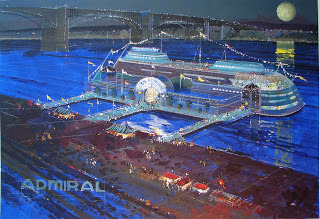
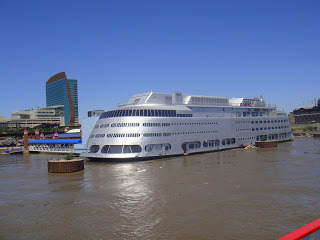
If you ever thought that DisneyQuest at Walt Disney World seemed like a white elephant image what the management of Six Flags thought when they tried to do something really different in St. Louis, Missouri with the SS Admiral. In 1933, investors in St. Louis decided to build a 300-foot state-of-the-art riverboat on top of a barge that was built in 1907. Designed by Maizie Krebs, a fashion illustrator for a St. Louis department store, the boat’s Art Deco look cost more than $1 million.
In 1987, Six Flags took over the ship and converted it into an indoor theme park. With the price of admission ($4.95 for adults and $2.95 for children), guests got to see an Audio-Animatronics show and another multi-media show. There was a 400-seat Cabaret that featured magic during the day and a more adult oriented cabaret show in the evening. A big draw was the large ballroom that could seat up to 700 for live shows and more than 1,000 persons for dancing and dining.
If you were hungry there was a 225-seat Oyster Bar and a 500-seat indoor/outdoor food court. The food court could be transformed into a disco at night. There was also a 200-seat fine dining restaurant. If that were not enough, there was also shopping and observations areas along the promenade decks.
Apparently it was not enough. The venue was a huge flop. The Admiral opened on St. Patrick’s weekend and was closed and bankrupt by the first week of October. During its seven month run attendance topped only 300,000 people.
Many factors contributed to the failure. Most locals did not appreciate the admission charge. This really tapped down daytime visits. The nostalgic theme was very narrow and not enough of a draw to teens and young adults. At the time, downtown St. Louis was not a nice place to be and very few locals lived nearby. Six Flags struggled to position the attraction. Most visitors perceived it as an adult venue, which meant it did great business on Friday and Saturday nights. However, during the day and weeknights it was a ghost town.
Other negative factors included the Cabaret, which never caught on, and the disco food court, which did at first but quickly faded. Of the shows, only the Audio-Animatronics show was popular. The multi-media show and the live shows were performed primarily to empty houses.
Published on June 05, 2013 06:00
June 3, 2013
Monorails and Los Angeles
I recognize that most people associate early monorails with Walt Disney. It is well known that one of the earliest drawings of Tomorrowland by Herb Ryman had one crossing over the entrance. The Disneyland Monorail was the first daily operating monorail in the Western Hemisphere. And when the line was extended to the Disneyland Hotel, it was the first US monorail to cross a public street. However, there has has been a long history of monorails in the United States and elsewhere. Even in the Los Angeles area.
One of the earliest examples was a system designed and patented by inventor Joseph W. Fawkes in 1907. He called it the Aerial Swallow and built a prototype in 1911 with the intention of building a line that would connect Burbank to downtown Los Angeles. He built a quarter-mile test track with a monorail train train that hung from the rail and was powered by a propellor driven by an air-cooled engine. The 40-foot train could travel at 3 mph. The train made its maiden run on July 4, 1911. As investors shied away, the project faded into history.
On January 15, 1954, Coverdale & Colitis submitted their proposal for $165 million monorail to the Los Angeles Metropolitan Transit Authority. That would be $1.4 billion today. The study was first begun in 1947. At first, the project was going to be built with private sector funds but in 1951 a public agency was set up specifically to look at the technology. The monorail was deemed superior to a subway or light rail because of the low-density distribution of land uses throughout the region, the high degree of automobile ownership, and the lack of any surface-free mass transit.
The line would begin at Van Nuys Boulevard and Roscoe Boulevard in Panorama City in the San Fernando Valley, pass by Universal Studios on its way to downtown Los Angeles where it would go under Hill Street for two miles. The monorail would continue to American Boulevard and Broadway in Long Beach. Fifteen stations were proposed and a trip from end to end would take approximately 67 minutes. Each station would have an adjacent parking lot or parking structure.
The systems being studied were a "classical" monorail, whereas the train hung below the rail, and a "split-rail" monorails, which features a train that hung below two closely spaced rails enclosed inside of a box. In both cases, it was suggested that the trains would run on rubber tires instead of steel wheels. In the case of the split-rail technology, the trains would have been virtually silent. At an average speed of 41 mph, the trains would outrun any other mode of travel. The proposed system would have featured 50 foot cars that can hold approximately 67 passengers. Up to eight cars could be combined to build one train.
The third kind of monorail, the German "saddlebag" approach advocated by ALWEG (and later installed at Disneyland) was dismissed as impractical. The report stated, "Few if any American transit experts believe the "saddlebag" has a future in the U.S., but a number suspect that a modern suspended monorail might meet the need of some cities."
Considering the economics, at best the system would break even and maybe even turn a profit with a modest public subsidy. Tickets would cost 20 to 50 cents and they initially expected up to 79 million boardings per year. For the system to succeed financially, more than 30 percent of the ridership would have to switch from driving.
So what happened? The proposal was doomed from the start. The monorail proponents were opposed by two huge political forces; the Pacific Electric Lines (the Red Car) and the Los Angeles Transit Lines. The Los Angeles Transit Lines was run by National City Lines, partially owned by General Motors. Their proposal was a series of express buses along the freeways. Shades of Roger Rabbit. These forces limited the right of way under consideration to a corridor that was the least desirable. They also lobbied the California Legislature to deny access to the Public Utilities Commission and the ability to float tax-free bonds.
The other strike against the system was the public's indifference to mass transit in Los Angeles. People just loved their cars and there was a sense of optimism that the region could build enough freeways to eliminate congestion once and for all. Sixty years later Los Angeles is still counting on the express buses (Metro's Rapid Bus network) to alleviate congestion. And we are all still stuck in traffic.
This was the only time Los Angeles looked at a monorail system. The following is an excerpt from Walt and the Promise of Progress City:
An alternate plan was proposed in 1960, just one year after Walt’s demonstration model at Disneyland. This system would have covered 74.9 miles, with 51 miles of beam overhead,21.6 miles at grade, and 2.3 miles in tunnels. This system would have cost $529 million. This project was too ambitious and was scaled back to 22.7 miles, with 12 miles in a subway under Wilshire Boulevard, at a cost of $192 million. Monorail advocates argued that a side benefit to the project was the construction of a multi-mile bomb shelter. Officials were so confident that the project would be funded that they held a public groundbreaking in Downtown Los Angeles and Beverly Hills in 1962. However, the funding did not materialize, and the project went nowhere.
Author Ray Bradbury was also a big fan of the monorail technology. Bradbury tried to encourage the City of Los Angeles to build a system. He formed a citizen’s group called Save Rapid Transit and Improve Metropolitan Environments. He had admired the multi-modal and successful transit network in San Francisco and thought a layered system like that would work in Los Angeles. He said, “Look, the psychology of the monorail is what makes it superior. First of all, it’s not an elevated like the old trains in Chicago. It’s up in the air, but it doesn’t make noise…you hardly hear it.” Bradbury added, “The important thing is that it’s above the traffic, and would glide past the traffic.”
The Alweg Monorail Company agreed with Bradbury on the merits of the technology and proposed a demonstration system for Los Angeles. After the success of the system at Disneyland and the experience gained at the 1962 Seattle Century 21 Exposition, Alweg was looking for a way to expand the business. So, on June 4, 1963, Sixten Holmquist, President of the Alweg Rapid Transit Systems, approached the Los Angeles County Board of Supervisors and the Metropolitan Transit Authority (MTA) and made them an offer.The press release said, “We are pleased to submit this day a proposal to finance and construct an Alweg Monorail rapid transit system 43 miles in length, serving the San Fernando Valley, the Wilshire corridor, the San Bernardino corridor and downtown Los Angeles.” The offer was for “a turn-key proposal in which a group will share risk, finance the construction, and turn over to MTA a completed and operating system to be repaid from MTA revenues.” The budget for the initial monorail network, including rolling stock, was estimated to be $187.5 million. Alweg would also conduct feasibility studies for expansion of the system to cover the entire Los Angeles region. In an interview with the Los Angeles Times in 1965, Walt said, “A monorail would be a natural attraction to thousands of people who would just ride it because it is something new and different. And it is needed. It’s not something that would be scrapped after two years.” A competitor company proposed a 75 mile suspended car system at a cost of $182.3 million.
In both proposals, the public agency would give the company all the fares collected for 40 years; that money would be used to pay for the bonds that would finance the projects. With either offer, the Los Angeles region could have had a fixed-rail transit backbone using revolutionary technology at no cost to the taxpayers. However, political pressure from Standard Oil Company dampened the Board of Supervisors’ and the LAMTA’s enthusiasm for the project.
In an interview in 2001, Bradbury said, “Telephone Alweg to accept their offer, made 30 years ago, to erect 12 crosstown monorails—free, gratis—if we let them run the traffic. I was there the afternoon our supervisors rejected that splendid offer, and I was thrown out of the meeting for making impolite noises. Remember, subways are for cold climes, snow and sleet in dead- winter London, Moscow or Toronto. Monorails are for high, free, open-air spirits, for our always-fair weather. Subways are Forest Lawn extensions. Let’s bury our dead MTA and get on with life.” To date, Los Angeles has spent billions of dollars to build 79 miles of fixed rail, much of it underground.
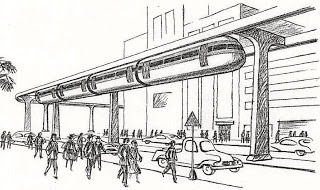
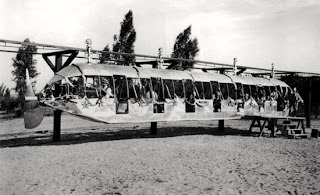
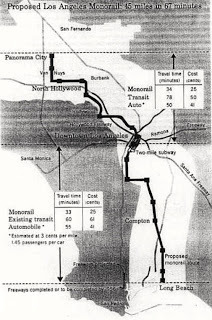
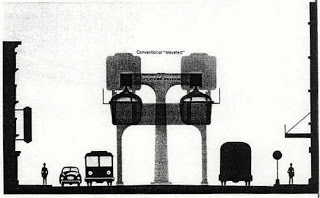
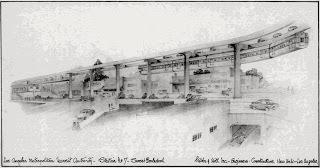
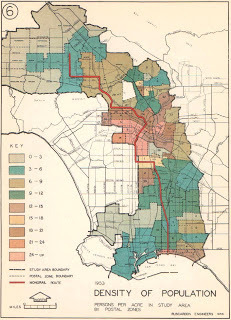
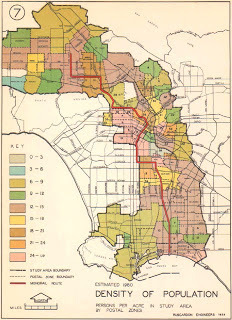
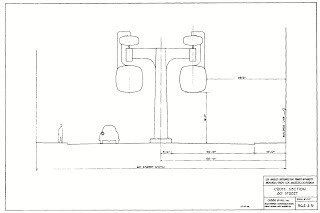
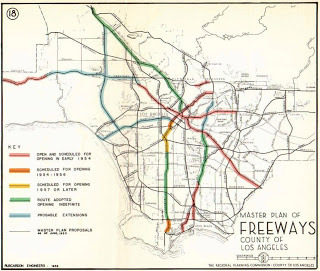
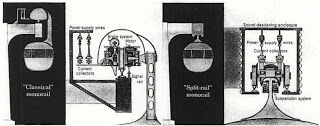
Published on June 03, 2013 06:00
May 31, 2013
Disneyland Design Basics - Part 3
Posting #3
For many Disneyland guests, there is a sense of timelessness inside the earthen berm that surrounds the park. In Disneyland Through the Decades, Jeff Kurtti said that frequently visiting the park “is revelatory in the drastic change you will see – and the almost complete lack of change you will see.” If you want to get a sense of the tremendous change that has occurred over the years, there is a model of Disneyland on opening day in 1955 tucked into a wall at the museum on Main Street.
Disneyland is a legible urban environment. The park is made up of a series of spaces that unfold before you. Hench said, “You begin with the first scene and move through. You don’t throw people into the fifth scene, where they cannot make sense of what is happening.” The payoff is a sense of welcoming, worth, value, and security.
This quality is achieved by removing visual cues with messages that do not embellish the narrative. In a concept drawing of Main Street USA from 1953, artist Dale Hennesy included a church. Such a civic building would have been common and historically correct. However, this is not reality. It is Disneyland and Walt decided it did not support the story and there is no church at the edge of the commercial district.
Every aspect of the public realm came under scrutiny from Walt. For example, when Bill Martin showed Walt drawings of Main Street he said, “[Walt] went over my plans with a fine-tooth comb. I’d drawn sidewalks on the blueprints with square corners and Walt said: ‘Bill, people aren’t soldiers! They don’t turn in at sharp angles! Curve the sidewalks! Make the corners round!’”
John Hench said the architecture, colors, background sounds, music, and smells create an environment where it “gives one the permission to talk with strangers.” Michael Broggie added, “[Walt] also thought the Park’s atmosphere could be sophisticated yet relaxed enough that adults would feel comfortable allowing their ‘inner child’ to play, without feeling embarrassed.”
For me, it was Imagineer Bruce Gordon who provided one of the best descriptions as to why Disneyland works. He said, “Walt was hands-on with everything at Disneyland. This was his park, his dream. I always believed the reason Walt built Disneyland was that he wanted one.” Bruce adds, “He wanted the biggest train layout; he wanted a place for all his toys. In the park he had an apartment above the fire station. Walt would get up early in the morning, before the park opened, and he’d drive his fire truck around Disneyland. People would think he was crazy, but he was only playing with his toy.”
Published on May 31, 2013 06:00

